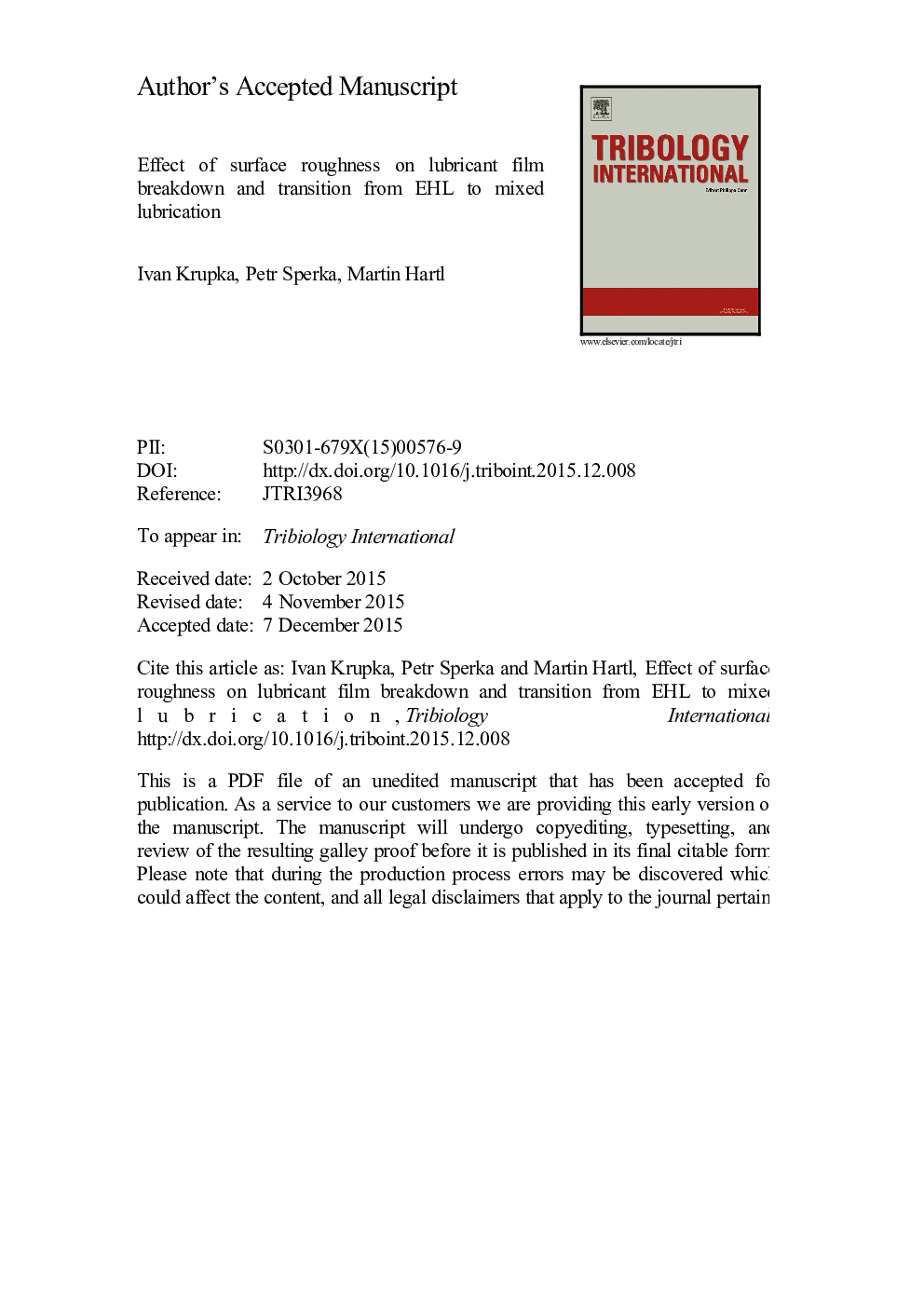| Article ID | Journal | Published Year | Pages | File Type |
|---|---|---|---|---|
| 7002625 | Tribology International | 2016 | 38 Pages |
Abstract
The ability of elastohydrodynamically lubricated (EHL) contacts to separate surfaces represents essential design requirement ensuring long life and low friction of machine components. Nevertheless, it is strongly affected by surface roughness that tends to decrease formed lubricant film. Surface roughness related effects are highly scales dependent. Dimensions in longitudinal and transverse directions influence roughness deformation while dimensions in roughness height can have significant effects on lubrication process. The prediction of the roughness features effect on lubricant film in the case of possible lubricant film breakdown still represents the challenge even for nowadays power full numerical simulation tools. At the same time some simple measures as the lambda ratio does not provides realistic estimation of lubrication regimes. However, there is a strong demand for such a prediction especially close to the transition to the mixed lubrication regime. In this paper possible approach based on the combination of experimental and numerical data is discussed. It is suggested that quantified experimental data could bridge possible gaps in the ability of the theory to provide the sufficient fast estimation of lubrication capabilities of engineering surfaces in the transition region between EHL and mixed lubrication.
Related Topics
Physical Sciences and Engineering
Chemical Engineering
Colloid and Surface Chemistry
Authors
Ivan Krupka, Petr Sperka, Martin Hartl,
